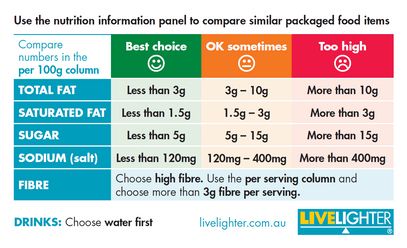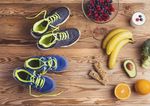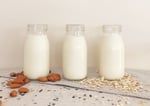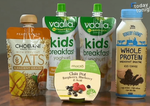Super foods or super dud cuisine - what’s cooking in your favourite mags?
by Guest Author,
- February 22, 2019
- Leave a comment
Elizabeth Keegan and Sarah Mouritz, student dietitians Curtin University
Many of us get inspiration for what to eat from recipes in magazines. But, are these recipes actually any good for us? We crunched the numbers on the recipes found in five leading Australian titles to see how well they match up to LiveLighter’s nutrition guidelines for total fat, saturated fat, sugar and salt.
The magazines we looked at…
|
 |
Read all about it
As a nation we’re not eating well – a recent national health survey found that the majority of Australians exceed the recommended maximum daily intakes for saturated fat, added sugar and salt. On top of that, more than two in three Australian adults are classified as overweight or obese.
One simple strategy that Aussies can use to eat better is to start cooking more meals at home. But before you flick through your favourite cooking mags searching for recipe inspo we wanted to answer the question – are the recipes found in these magazines actually healthy?
Our method of preparation
Food and entertainment publications are some of the most popular magazines in Australia, attracting more than 6.6 million readers per year (26% of the population). Using the November 2018 editions of five popular and widely available titles, we selected every second main meal recipe to analyse, a total of 60 recipes. If a magazine contained less than seven main meal recipes, all of the recipes were included in the analysis.
Below are the nutrition guidelines we used to assess the healthiness of each recipe. LiveLighter uses these criteria when developing recipes. Recipes were classified as healthy if they contained at least two ‘green’ and no ‘red’ across the four nutrient categories of total fat, saturated fat, sugar and salt.
Our findings
In total, half of the analysed recipes met LiveLighter’s nutrition criteria. There were big differences in the healthiness of recipes across the different magazines, with ‘Woolworths Fresh’ having the most healthy recipes (88%) and ‘Delicious Magazine’ having the least (18%).
We wanted to see if making some simple changes and swaps could increase the number of recipes that were classified as healthy. Below are the changes we made to the recipes to help them meet the LiveLighter guidelines. These are simple swaps that anyone could do to increase the healthiness of recipes sourced from cooking magazines.
Just from making these simple swaps, the percentage of recipes classified as healthy increased from 50% to 73%!
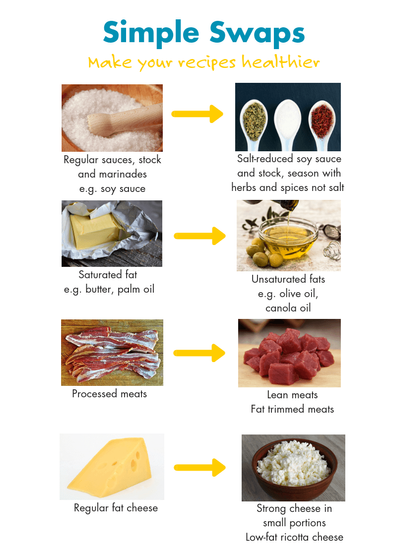

Good to remember
Although we found some interesting results, we wanted to emphasise that we only looked at the main meal recipes in one edition of each of the magazines. Magazine recipes change each month to reflect different seasons, popular food trends and to celebrate different events like Christmas. The results may have been different if we had chosen a different month or had looked at multiple editions of each magazine.
Take-home
- Woolworths Fresh magazine had the most main meal recipes classified as healthy.
- Magazine recipes can easily be made healthier with a few simple swaps.
- Just because a recipe doesn’t specify that you should use salt-reduced sauces/stocks, reduced-fat dairy or lean meats it doesn’t mean that you can’t make the swap. Be creative!
- Cooking healthy meals at home is one way that Aussies can LiveLighter.
LiveLighter supports future health professionals through engagement with Australian Universities. This student blog was created for LiveLighter as part of a practical placement completed with Cancer Council WA towards completion of a Master of Dietetics at Curtin University, Western Australia.
